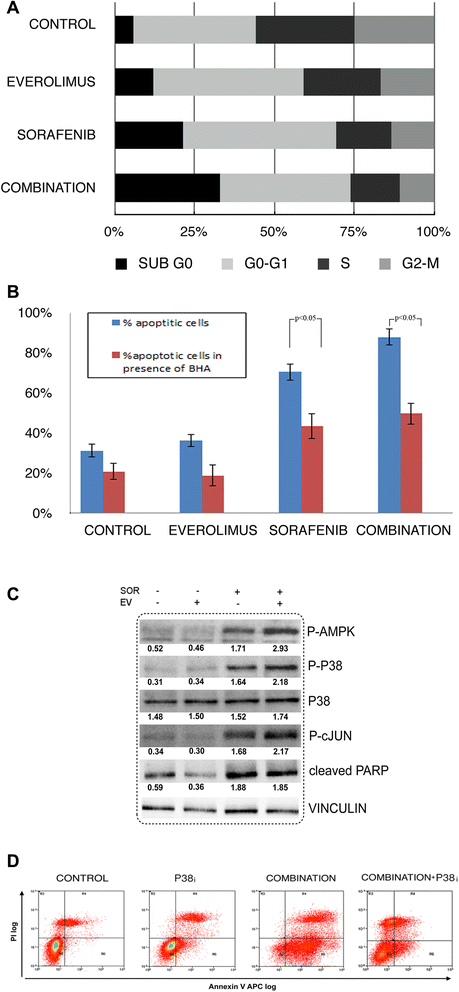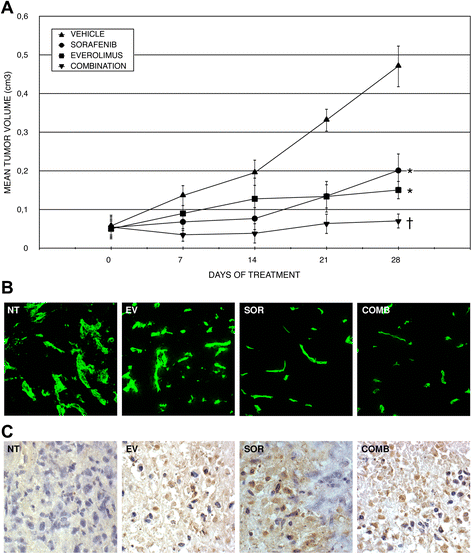The combination of sorafenib and everolimus shows antitumor activity in preclinical models of malignant pleural mesothelioma
- PMID: 25952930
- PMCID: PMC4429519
- DOI: 10.1186/s12885-015-1363-1
The combination of sorafenib and everolimus shows antitumor activity in preclinical models of malignant pleural mesothelioma
Abstract
Background: Malignant Pleural Mesothelioma (MPM) is an aggressive tumor arising from mesothelial cells lining the pleural cavities characterized by resistance to standard therapies. Most of the molecular steps responsible for pleural transformation remain unclear; however, several growth factor signaling cascades are known to be altered during MPM onset and progression. Transducers of these pathways, such as PIK3CA-mTOR-AKT, MAPK, and ezrin/radixin/moesin (ERM) could therefore be exploited as possible targets for pharmacological intervention. This study aimed to identify 'druggable' pathways in MPM and to formulate a targeted approach based on the use of commercially available molecules, such as the multikinase inhibitor sorafenib and the mTOR inhibitor everolimus.
Methods: We planned a triple approach based on: i) analysis of immunophenotypes and mutational profiles in a cohort of thoracoscopic MPM samples, ii) in vitro pharmacological assays, ii) in vivo therapeutic approaches on MPM xenografts. No mutations were found in 'hot spot' regions of the mTOR upstream genes (e.g. EGFR, KRAS and PIK3CA).
Results: Phosphorylated mTOR and ERM were specifically overexpressed in the analyzed MPM samples. Sorafenib and everolimus combination was effective in mTOR and ERM blockade; exerted synergistic effects on the inhibition of MPM cell proliferation; triggered ROS production and consequent AMPK-p38 mediated-apoptosis. The antitumor activity was displayed when orally administered to MPM-bearing NOD/SCID mice.
Conclusions: ERM and mTOR pathways are activated in MPM and 'druggable' by a combination of sorafenib and everolimus. Combination therapy is a promising therapeutic strategy against MPM.
Figures








References
Publication types
MeSH terms
Substances
LinkOut - more resources
Full Text Sources
Other Literature Sources
Medical
Research Materials
Miscellaneous

